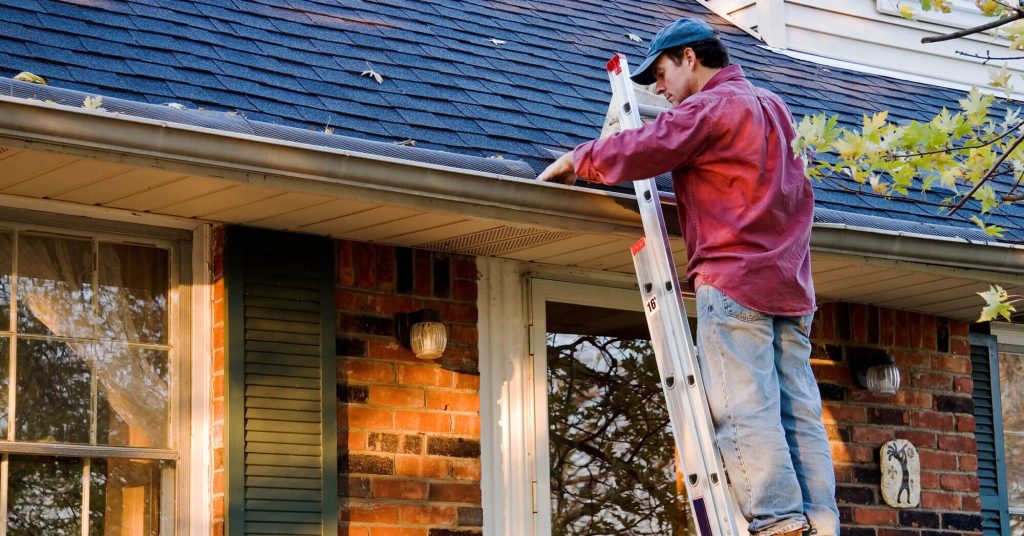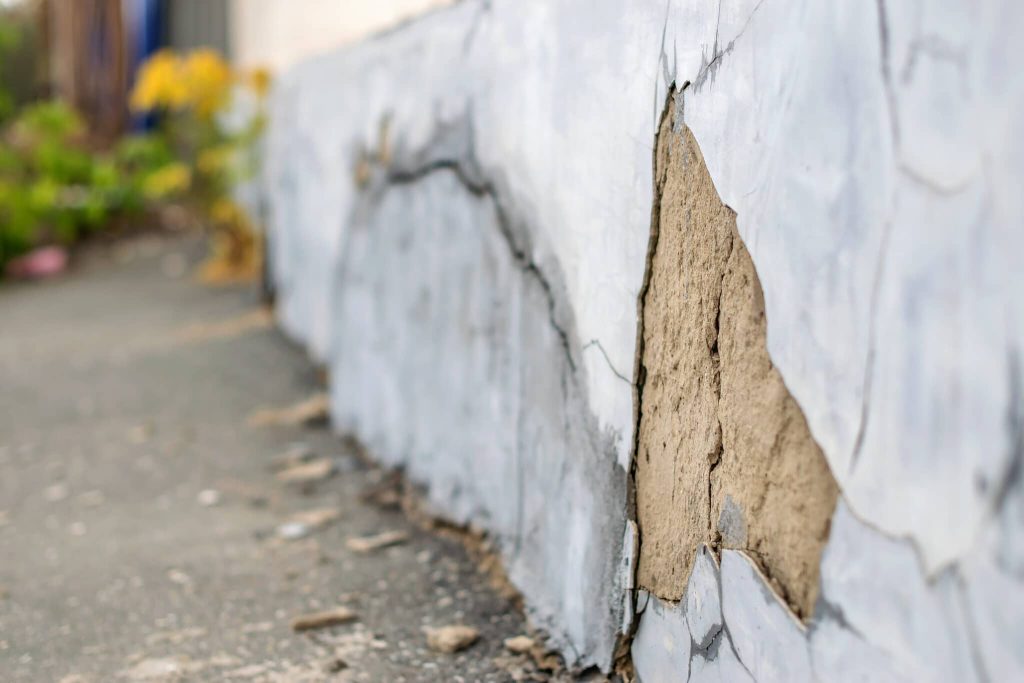Spring Cleaning Musts: Protect Your Home from Post-Winter Disasters

Winter can be harsh on any property, from freezing temperatures that damage foundations to ice build-up that weakens roofs. As spring begins, it’s time to focus on essential cleaning and maintenance tasks to safeguard your home against flooding, water leaks, and structural issues. Properly preparing your home in the spring ensures it remains protected through heavy spring rains and beyond. In this comprehensive guide, we’ll cover the most critical steps you need to take to protect your home from lingering winter risks. Keep reading to learn how to assess your home’s exterior and interior, address red flags before they escalate, and preserve the integrity of your property for the coming year.
Why Spring Maintenance is Essential

Long and harsh winters can leave your home with hidden damage. Ice, snow, and freezing temperatures can wreak havoc on shingles, siding, gutters, and your home’s foundation. When the weather finally warms up, that damage can manifest in costly leaks, damp crawl spaces, foundation cracks, and more. By being proactive with spring cleaning and maintenance, you can catch and fix minor problems before they become expensive disasters.
Remember, prevention is always more cost-effective than a significant restoration project. To ensure your home is protected and prepared, consider scheduling professional inspections and consult experts like Affordable Restoration’s team for specialized services. Early intervention and informed action can make all the difference in preserving your home’s structural integrity and value.
Exterior Inspections and Repairs
Roof Evaluation
Your roof is your first line of defense against the elements. As snow melts and spring rains begin, any weaknesses in your roof’s integrity will become evident. Follow these steps to ensure your roof is ready for spring:
- Check for Missing or Damaged Shingles
Inspect your shingles for signs of curling, warping, or missing pieces. Winter storms can loosen or break shingles, leaving your roof vulnerable to leaks. - Look for Ice Dam Residue
Even if you cleared ice dams during winter, their lingering effects may be visible in the form of warped shingles, cracked flashing, or mold buildup. - Examine the Flashing and Skylights
Over time, flashing around chimneys, vents, and skylights can rust, warp, or come loose. These small vulnerabilities can become major leak points if not addressed.
If your roof inspection reveals serious issues or if you’re uncertain about potential damage, consult with a restoration professional for an expert opinion. Catching roof damage early often prevents more significant water damage in your home.
Gutter and Downspout Cleaning
Gutters are crucial for directing water away from your roof and foundation. Clogged or damaged gutters can cause water to overflow onto walls and seep into foundations:
- Clear Debris: Remove leaves, twigs, and any other debris that may have collected in gutters and downspouts during the winter. Blocked gutters lead to pooling water, which can damage your roof edge and siding.
- Check for Leaks: Repair any cracks or leaks in gutters and downspouts before the rainy season sets in.
- Ensure Proper Drainage: Confirm that downspouts divert water at least several feet away from your foundation. If necessary, consider adding downspout extenders.
Exterior Walls, Windows, and Doors
Once you’ve cleared your roof and gutters, inspect the walls, windows, and doors:
- Siding Damage: Look for cracks, warping, or peeling paint. These issues can let moisture into your home’s structure.
- Window Seals: Check for deteriorating caulk around windows. Re-seal them if needed to keep out moisture and maintain energy efficiency.
- Door Frames and Weatherstripping: Replace damaged weatherstripping to keep warm air in and rainwater out.
A thorough exterior inspection helps you stay on top of issues that could lead to water or structural damage. If you notice peeling paint, rot, or other signs of exterior deterioration, address them promptly.
Foundation and Basement Checks

Identifying Foundation Cracks
Winter frost can cause your foundation to shift or even crack. As the ground thaws, these issues can worsen. Even hairline cracks can allow water to seep in, leading to basement leaks and potential structural damage. Seek professional help if you notice:
- Horizontal or stair-step cracks.
- Widening gaps in existing cracks.
- Doors or windows that no longer open or close properly.
Don’t ignore the early signs of foundation damage. Instead, consider foundation crack repairs to keep your home stable and safe. Affordable Restoration’s experts can assess the severity of the damage and determine the best long-term solution.
Basement and Crawl Space Inspections
Basements and crawl spaces are prone to humidity, mold, and water intrusion, especially as outdoor temperatures rise. During your spring inspection:
- Check for Dampness
Look for signs of moisture on floors, walls, and in corners. Stains, discoloration, or musty odors typically indicate water issues. - Inspect for Mold
Mold can grow rapidly in moist environments. Promptly address any mold problems to prevent health hazards and further structural damage. - Crawl Space Evaluation
Ensure your crawl space remains dry, well-ventilated, and free of excessive humidity. If you’re unsure how to check this area effectively or suspect any hidden damages, you can schedule a crawl space check to ensure everything is in good condition.
By tackling foundation cracks and moisture issues early, you’ll protect your home from expensive structural repairs down the road.
Water Damage Prevention and Flood Preparedness
Landscaping and Drainage
One often overlooked aspect of spring home maintenance is your landscaping. Proper grading ensures water drains away from your home’s foundation. Areas of concern include:
- Sloping: Make sure the ground around your home slopes downward at least 6 inches over 10 feet to direct water away from the foundation.
- French Drains or Swales: Consider installing drains or swales if your property struggles with drainage. These features collect and channel water away from your home.
- Soil and Mulch: Properly mulching flowerbeds and planting areas helps water soak into the ground slowly, preventing runoff and soil erosion.
Sump Pump Check
A sump pump is your basement’s best friend during heavy rains or unexpected water leaks. If you have one, ensure it’s working correctly:
- Clean the Pit: Remove any debris that may have accumulated.
- Test the Pump: Pour water into the pit and watch to see if the pump activates.
- Backup Power: Consider a battery backup system to keep your sump pump operational during power outages.
If you spot water intrusion signs or suspect your sump pump isn’t functioning correctly, contact a water damage restoration specialist. Quick intervention can save you thousands in repair costs if significant flooding occurs.
Preventative Measures and Quick Response
A fast response can prevent extensive structural and mold damage when water damage does happen—due to a burst pipe, storm, or unforeseen event. That’s why having a reliable restoration service on speed dial is key. Water damage restoration experts can quickly assess, mitigate, and repair damage to help you avoid further complications.
Interior Spring Cleaning Essentials
Air Quality and Ventilation
After months of closed windows and heating, your home can accumulate stale air and airborne irritants. Improve air quality by:
- Cleaning or Replacing HVAC Filters: Dirty filters strain your system and compromise air quality.
- Vacuuming and Dusting Thoroughly: Focus on areas like behind furniture, under appliances, and in vents.
- Opening Windows: When the weather permits, let in fresh air to reduce humidity and improve ventilation.
Plumbing and Appliance Maintenance
Spring is the perfect time to check your home’s plumbing:
- Check for Leaks: Inspect under sinks, around toilets, and in basements or crawl spaces for signs of moisture.
- Appliance Care: Clean your washing machine and dishwasher filters. Flush your water heater to remove sediment buildup.
- Look for Low Water Pressure or Slow Drains: These could be symptoms of clogs or hidden leaks.
Early detection of plumbing issues prevents much larger, more expensive problems—like burst pipes or significant water damage.
Fire and Safety Checks
Lastly, ensure your home remains safe from other potential hazards:
- Smoke and Carbon Monoxide Detectors: Replace batteries and test these devices.
- Fire Extinguishers: Confirm their pressure is at an adequate level.
- Emergency Plan: Update your family’s emergency plan and ensure everyone knows exit routes and meeting points.
When to Call Affordable Restoration Professionals
Although homeowners can handle many spring cleaning tasks, certain situations demand professional intervention. If you encounter complex issues—like substantial foundation damage, persistent water intrusion, or mold infestations—don’t hesitate to seek expert help. Specialists, like the team at Affordable Restoration, have the expertise and tools to diagnose and remediate problems before they escalate.
Professional inspections provide peace of mind, offering precise solutions that meet long-term needs. Early investment in professional services can save you from extensive repairs, higher costs, and compromised structural integrity in the future.
Crafting a Long-Term Maintenance Plan
Spring cleaning and maintenance shouldn’t be treated as a one-time checklist; it’s an ongoing responsibility. To ensure year-round protection, create a maintenance schedule:
- Seasonal Inspections: Inspect your roof, gutters, foundation, and basement/crawl space at least twice a year, typically in spring and fall.
- Regular HVAC Tune-Ups: Service your heating and cooling systems annually to maintain efficiency.
- Annual Plumbing and Electrical Checks: Small leaks or wiring faults can become major nightmares if unresolved.
- Routine Crawl Space and Attic Assessments: These areas can hide issues like rodents, mold growth, or poor insulation.
- Professional Consultations: For potential structural concerns or water damage, contact the professionals for an accurate assessment.
By dividing tasks into manageable timelines and setting reminders, you can stay on top of your home’s health throughout the year. Spring is the ideal launchpad for this proactive approach, as you can identify and fix problems before they compound under warmer, rainier conditions.
Spring cleaning isn’t just about tidying up—it’s about safeguarding your biggest investment: your home. From your roof and gutters to your foundation and crawl space, numerous areas demand careful inspection after the stresses of winter. You can save thousands of dollars in long-term repairs by promptly addressing issues like damaged shingles, gutter clogs, foundation cracks, and water leaks.
Stay vigilant, maintain a consistent home inspection routine, and call in professionals when a problem goes beyond your expertise. With comprehensive spring maintenance—supported by expert help from providers like Affordable Restoration—you can look forward to a worry-free season and a home that remains safe, comfortable, and structurally sound for years.
Make this spring your season of preventative care and proactive home maintenance. By investing time and attention now, you’ll enjoy peace of mind and prevent the stress of dealing with unplanned disasters. So roll up your sleeves, conduct those inspections, schedule professional services when necessary, and celebrate the warmer months in a home that’s well-fortified against the elements.
